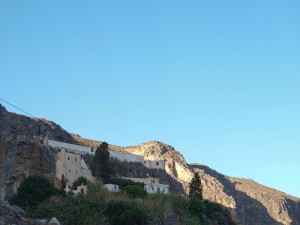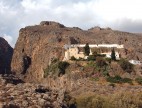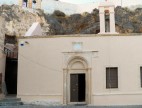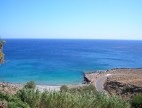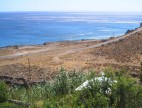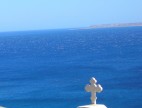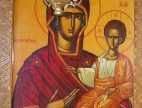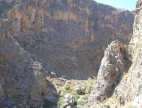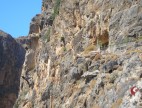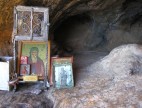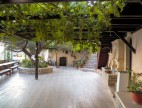Holy Monastery of Kapsas
The monastery of Kapsas is located in the southerneast corner of Crete, on the west side of the exit from the gorge of Pervolakia towards the sea. Even though the date of its foundation is unknown to us, the existence of wall painting decoration, possibly of the 13th–14th centuries, in the aisle of St. John the Forerunner, as well as the engravings which cover a long period, the oldest from 1512 until the more recent in the 18th century, give us secure facts for an early dating of the monument. The existence of a small monastery, at least, is also demonstrated by testimonials, according to which there were two ruined cells next to the church during its reestablishment in the middle of the 19th century. The contemporary history of the monastery is inextricably linked to John Vitsentzos or Gerontogiannis, who in 1844, decided to become a monk in the area, originally living as an ascetic in an adjacent cave for seventeen years and later repairing the existing cells. The sanctity of his life and his fame drew other ascetics, resulting in the creation of a monastic community and the construction of additional buildings. After the passing of Gerontogiannis, his grandson, Joseph Gerontakis, who became the abbot of the monastery in 1866, continued the construction work of his predecessor, as can be confirmed from the inscription on the entrance to the catholicon, of 1882, which mentions both the first donor, Gerontogiannis, and Joseph. The building complex of the monastery develops incrementally due to the sloping ground of the steep slope, with the cavernous church of St. John as the centre, which is formed externally as a twin-naved, barrel-vaulted church. The grave of Gerontogiannis, who was officially included in the list of saints of the Orthodox Church in the year 2004, is located in the interior, in the southwest corner. Excellent icons of the Cretan School are preserved in the church, such as the All-Holy Virgin the Vrefokratousa, in the type of the Dexiokratousa [‘holding the Child on the right’], of the beginning of the 15th century, and St. John the Forerunner of the 16th century.

